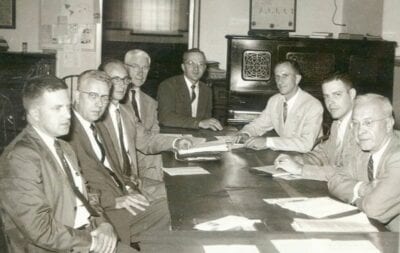Seymour Hersh, of the New York Times, ran an article on December 22, 1974, concerning alleged intelligence abuses by the CIA and other intelligence agencies; American suspicions grew. A large number of people believed that the intelligence community had crossed some sort of line when they read Hersh’s article. Hersh claimed that “[t]he Central Intelligence Agency, directly violated its charter, conducted a massive, illegal domestic intelligence operation during the Nixon Administration against the antiwar movement and other dissident groups in the United States.” He also reported that the CIA had files on ten thousand American citizens, that the CIA had illegally broken into private property, wiretapped, and illegally inspected United States citizens’ mail.
The intelligence activities Hersh’s story addressed were related to what William Colby, the director of the CIA during the investigation, called “the family jewels,” in a document compiled months earlier concerning “questionable” activities of the CIA. Upon seeing the so-called “family jewels,” President Gerald Ford realized his and previous administrations had a significant disclosure problem. With the purpose being to deal with these accusations before Congress did, the Ford Administration set up the Rockefeller Commission, chaired by Vice President Nelson Rockefeller. Adhering to the belief in accountability through checks and balances and in the wake of Watergate and Vietnam, Congress did not believe Ford could objectively investigate his own branch, so both the Senate and the House of Representatives set up their own investigations into the operations of the intelligence community.
Thus, the Rockefeller Commission attempted to simply reduce the damage being done by the Church Committee that was formed on January 27th, 1975 and the Pike Committee that was formed on February 19th, 1975. President Ford created the “Rockefeller Commission” to whitewash CIA history and propose toothless reforms. The commission’s namesake, Vice President Nelson Rockefeller, is himself a major CIA figure. Five of the commission’s eight members are also members of the Council on Foreign Relations, a CIA-dominated organization.
The Senate gave the Church Committee nine months to complete its investigation, but when the Rockefeller Report was released there was nothing in it concerning assassination plots by the CIA on foreign leaders, which some in the Senate believed were central to the scandal.
It was later learned that the Gerald Ford White House significantly altered the final report of the supposedly independent 1975 Rockefeller Commission investigating CIA domestic activities, over the objections of senior Commission staff, according to internal White House and Commission documents posted February 29, 2016 by the National Security Archive at The George Washington University (www.nsarchive.org). The changes included removal of an entire 86-page section on CIA assassination plots and numerous edits to the report by then-deputy White House Chief of Staff Richard Cheney.
The posting includes the entire suppressed section on assassination attempts, Cheney’s handwritten marginal notes, staff memos warning of the fallout of deleting the controversial section, and White House strategies for presenting the edited report to the public. The documents show that the leadership of the presidentially-appointed commission deliberately curtailed the investigation and ceded its independence to White House political operatives.
This evidence has been lying ignored in government vaults for decades. Much of the work of securing release of the records was done by the John F. Kennedy Assassinations Records Board in the 1990s, and the documents were located at the National Archives and Records Administration at College Park, Maryland; or at the Gerald R. Ford Library in Ann Arbor, Michigan. Additional mandatory declassification review requests filed by Archive fellow John Prados returned identical versions of documents, indicating the CIA is not willing to permit the public to see any more of the assassinations story than we show here. The documents in this set have yet to be incorporated into standard accounts of the events of this period. President Ford passed investigative materials concerning assassinations along to the Church Committee of the United States Senate and then attempted—but failed—to suppress the Church Committee’s report as well. (Source)



